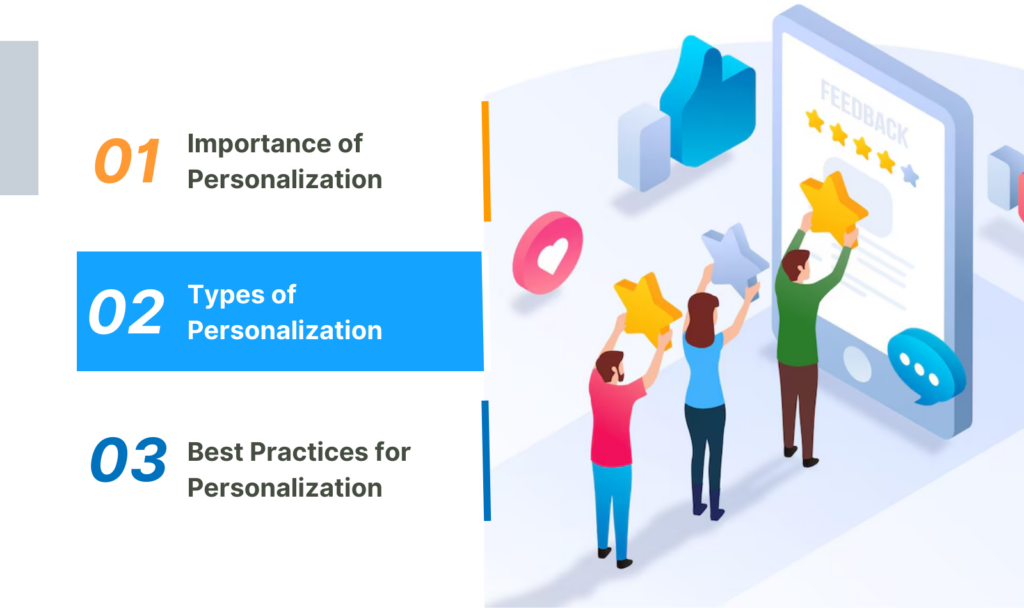Email marketing is one of the effective digital marketing strategies. However, finding the right balance between email automation and personalization can be challenging. Automated email marketing provides efficiency and scalability, while personalization fosters engagement and loyalty. Here are the best practices to blend these two critical elements to maximize the impact of your email campaigns.
Marketing Automation: Streamline Your Email Campaigns

Understanding Marketing Automation
Marketing automation refers to the use of software to automate repetitive marketing tasks. This technology allows businesses to target customers with automated email, web, social, and text messages. Automation streamlines marketing efforts, making it easier to manage complex campaigns and freeing up valuable time for creative strategy and analysis.
Benefits of Marketing Automation
- Efficiency: Automated workflows handle repetitive tasks, allowing your team to focus on strategic planning and creative tasks.
- Scalability: As your business grows, automation helps manage increasing contacts without overwhelming your resources.
- Consistency: Automation ensures your messages are sent at the optimal time, maintaining a consistent communication flow with your audience.
Best Practices for Marketing Automation
- Segmentation: Divide your email list into segments based on demographics, behavior, or other criteria. This ensures that your automated messages are relevant to each group.
- Behavioral Triggers: Use triggers like website visits or past purchases to send timely and relevant emails.
- A/B Testing: Regularly test different elements of your emails (subject lines, content, call-to-action) to optimize performance.
Personalization: Create Customer Experiences

Personalization in email marketing refers to customizing messages to individual recipients based on their preferences, behavior, and other personal data. Personalized emails are more engaging and can significantly improve open, click-through, and conversion rates.
Types of Personalization
- Essential Personalization: Includes using the recipient’s name in the subject line or email greeting.
- Dynamic Content: Involves tailoring the content within the email based on the recipient’s preferences or past interactions.
- Predictive Personalization: Uses data and analytics to predict and deliver the content that will be most relevant to the recipient.
Best Practices for Personalization
- Data Collection: Gather data from multiple sources tounderstand your customers. This can include website analytics, purchase history, and social media interactions.
- Preference Centers: These allow subscribers to set preferences for the type of content they wish to receive and the frequency of emails.
- Personalized Subject Lines: To increase open rates, craft subject lines that include the recipient’s name or reference their past behavior.
Email Automation

Implementing Email Automation
Email automation involves setting up workflows that send emails automatically based on predefined criteria or triggers. These automated workflows can include welcome emails, abandoned cart reminders, and post-purchase follow-ups. Also, there are some email marketing strategy. By using these tools, you can automate your email verification process. Verifying emails is one of the major aspects of email marketing, and your emails will directly land in the inboxes if the email addresses are verified.
Types of Automated Email Marketing
- Welcome Emails: Automatically sent to new subscribers to introduce them to your brand.
- Abandoned Cart Emails: Remind customers of items left in their shopping cart.
- Post-Purchase Emails: Follow up with customers to thank them, suggest related products, or request feedback after a purchase.
Best Practices for Email Automation
- Clear Objectives: Define objectives for each automated email Marketing, such as increasing sales, boosting engagement, or gathering feedback.
- Integration with CRM: Integrate your email marketing platform with your CRM to ensure that all customer data is up-to-date and accurate.
- Regular Reviews: Regularly review and update your automated workflows to ensure they remain relevant and practical.
Balancing Email Automation and Personalization

Combining Automation and Personalization
The key to a successful email marketing strategy is finding the right balance between automation and personalization. Here’s how to do it:
- Segment and Personalize: Use marketing automation to segment your email list, then personalize the content for each segment. This ensures that each recipient receives relevant messages without needing manual intervention.
- Dynamic Content: Implement dynamic content blocks in your automated emails. This lets you personalize specific email parts based on the recipient’s data.
- Behavioral Triggers: Combine behavioral triggers with personalization. For example, if a customer abandons their cart, send an automated email with personalized product recommendations based on their browsing history.
Ensuring Relevance and Engagement
- Customer Journey Mapping: Map out the customer journey and identify critical touchpoints where automated, personalized emails can enhance the experience.
- Responsive Design: Ensure your emails are mobile-friendly, as many emails are opened on mobile devices.
- Feedback Loops: Implement feedback loops to continuously gather data on your email campaigns’ performance and use this information to refine your strategies.
Measuring Success
- Key Metrics: Track critical metrics such as open rates, click-through rates, conversion rates, and unsubscribe rates to measure the success of your email campaigns.
- A/B Testing: Conduct A/B tests regularly to determine which elements of your emails are most effective and adjust your strategies accordingly.
- Customer Feedback: Solicit feedback from your subscribers to understand their preferences and improve the relevance and personalization of your emails.
Conclusion
Balancing email automation and personalization is crucial for the success of your email marketing campaigns. By utilizing marketing automation to streamline processes and incorporating personalization to customize messages to individual recipients, you can enhance engagement, improve conversion rates, and build stronger customer relationships. Implement these best practices to create a harmonious email marketing strategy. Contact us today to get more insights on how you can balance both and achieve the desired results for your business.
Key Points
- Combine automation and personalization to deliver relevant, timely, and engaging email campaigns at scale.
- Utilize data segmentation, behavioral triggers, and dynamic content to ensure your automated emails feel personalized and targeted.
- Regularly review performance metrics and conduct A/B testing to optimize the effectiveness of your email marketing strategy.

